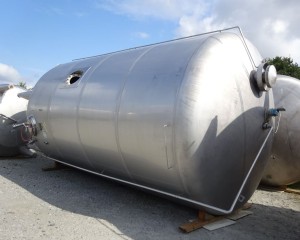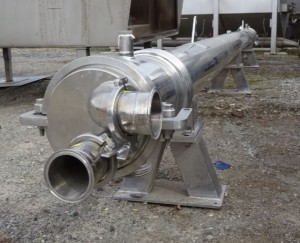Getreidetank für Lebensmittel
Grain tank
Container 11.000 liters made of V2A, used, single-walled
Art.-Nr. M-1213
EUR 5.200,00
add. 19 % VAT excl. shipping costs
Behälter 11.000 Liter aus V2A, gebraucht, einwandig
EUR 5.200,00
add. 19 % VAT excl. shipping costs
Container 43.000 liters aus V2a, single-walled
Art.-Nr. M-2202
EUR 17.000,00
add. 19 % VAT excl. shipping costs
Behälter 43.000 Liter aus V2a, einwandig
EUR 17.000,00
add. 19 % VAT excl. shipping costs
Container 47.200 liters made of V2A single-walled
Art.-Nr. M-2240
EUR 21.500,00
add. 19 % VAT excl. shipping costs
Behälter 47.200 Liter aus V2A einwandig
EUR 21.500,00
add. 19 % VAT excl. shipping costs
Grain tank
There are many different types of grain. People have cultivated different types of grain for thousands of years. The most well-known ones are wheat, barley, rye and oat. Grain must be properly stored after harvesting. We offer grain tanks suited to this purpose.
Types of grain and their usage
Nowadays, wheat is the most important ingredient in baking bread and producing pastries. But it’s also used as feed for animals. What it’s used for depends entirely on the type of wheat.
Barley has been used to produce pearl barley and cereal-based coffee. It’s also used in beer brewing. However, today, this grain is mostly cultivated as feed for pigs and cattle.
Rye, like wheat, is a very old grain. Rye is very robust and is able to withstand cold weather. It’s a popular grain for baking bread, particularly in Northern and Eastern Europe.
Harvesting grain
In the past, grain was harvested by hand, which involved several steps. The grain would usually be cut with a scythe and tied together. It would then be left out in the field so that it could dry. The grain would then be separated from the chaff at the farm for subsequent processing.
Nowadays, combine harvesters and machines take care of these tasks. The prepared grain would then be stored in large tanks, also known as silos.
Storing grain
With grain tanks it’s important for the grain not to be damaged by moisture and to be stored such that it remains dry and protected from external influences. Moisture can cause mould, rendering the entire contents of a tank unusable. To prevent this, moisture content should be monitored regularly.
Grain tanks are generally tanks which are fixed in place and can be seen in the agricultural industry on farms. Large-scale bakeries also have their own individual grain tanks and mill the grain themselves.
Transporting grain
Transport tanks are needed in order to transport grain. However, these also need to meet the requirements of a grain tank and therefore be suitable for foodstuffs and dry transport.
Looking for a grain tank? Get in touch with us! We have a large range of tanks which we can adapt to your needs.











